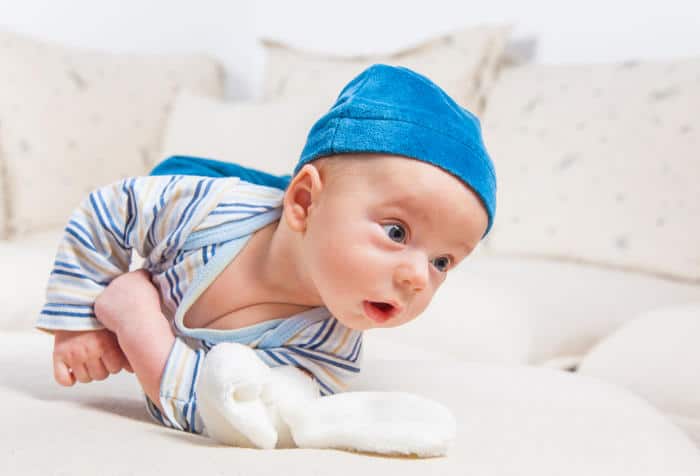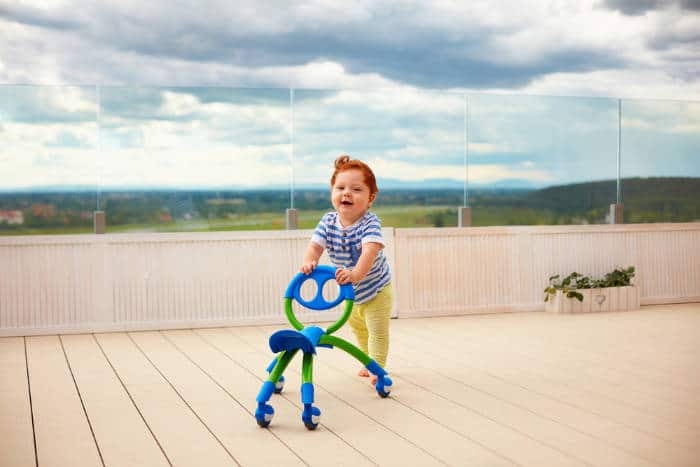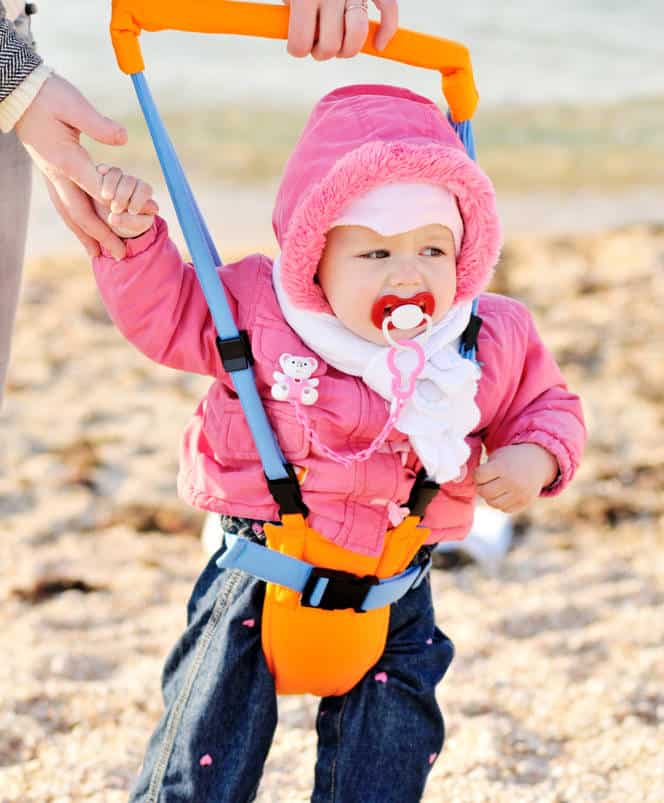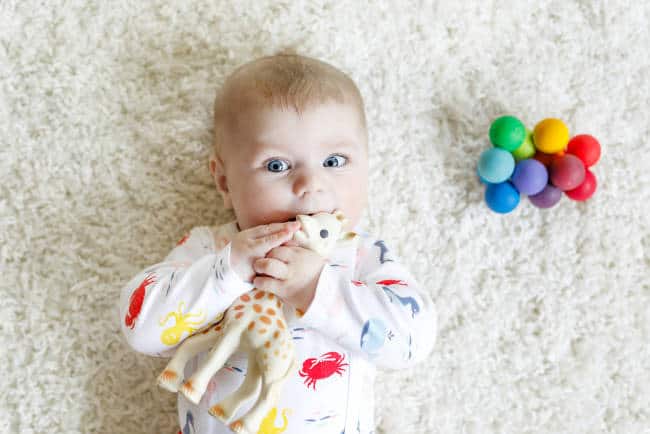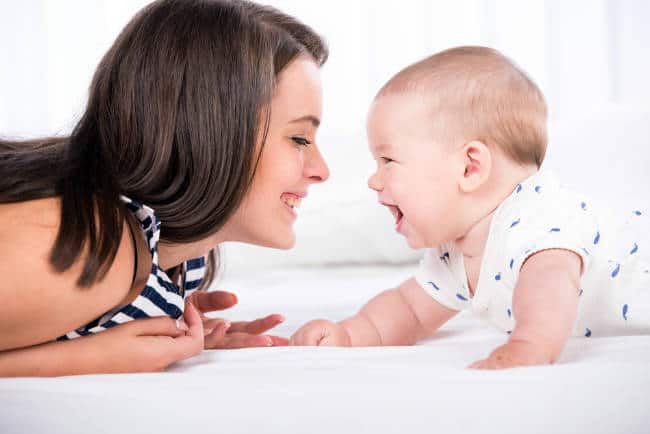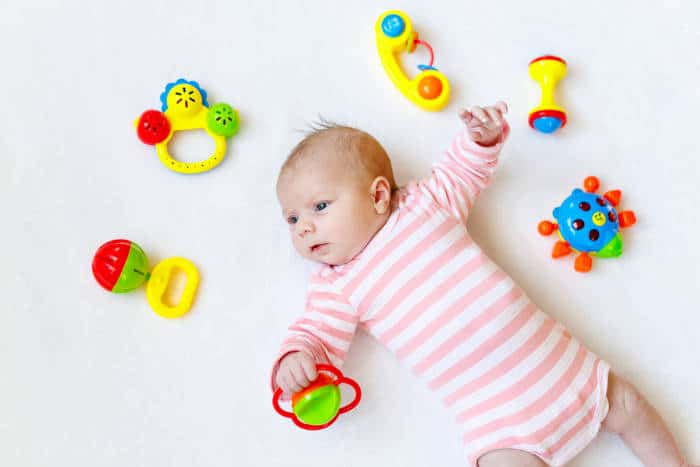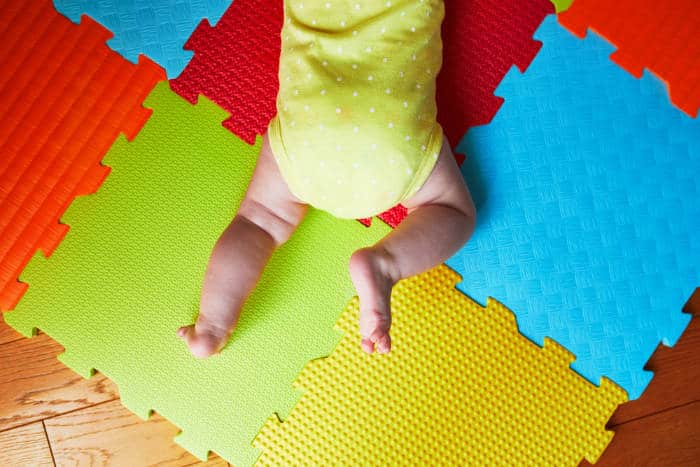Babies are born with an innate curiosity for the world. They want to explore, touch, taste, smell and feel everything around them. They want to know how the world works.
Curiosity helps children become better learners. Their eagerness to discover is what allows them to naturally progress into developmental stages in their life. And that begins so very early on. Their desire to interact begins with eye contact and cooing, and later moves towards sitting up. Their curiosity of mobility allows them to crawl forward, pull-up to stand, and eventually take their very own first steps.
Whether parents want a few minutes to be hands-free or are eager for the next developmental stage to begin, or they want to nurture that curiosity we talked about, they oftentimes turn to commercialized baby products for help. And hey! That is totally okay! They can be a wonderful addition to your baby’s life.
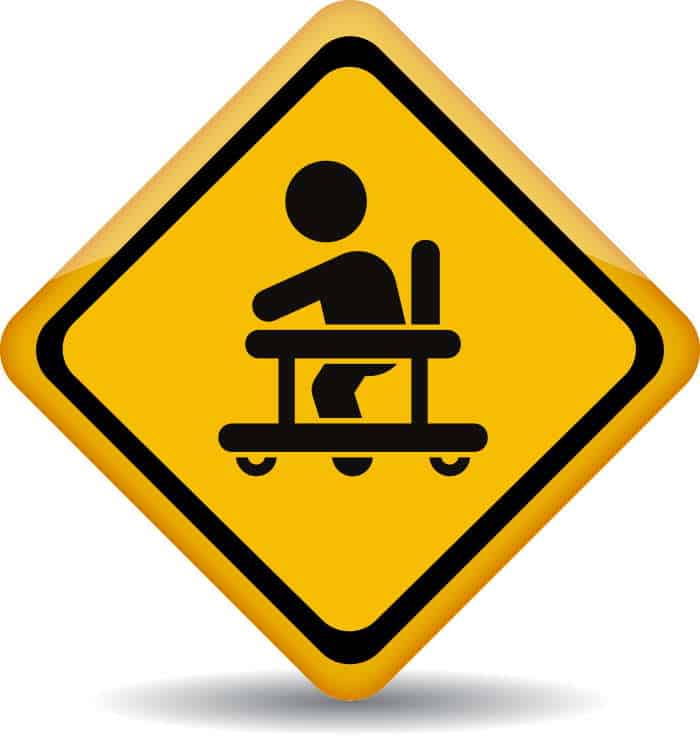
In the excitement of babies walking, parents often purchase baby walkers for their children hoping that the product will either start the process of walking, or improve it. They want to be able to keep up with their baby’s appetite to learn, so in comes the brand new baby gear.
Before you go and splurge on a baby walker though, we’re here to give you the lowdown on it and answer some questions you might already have. Is it worth it? Will your child learn how to walk faster than her peers? Is it a necessary purchase?
But most importantly, we want to focus the one burning question: are baby walkers safe?
Get comfy and grab a snack. Let’s talk about safety.
Table of Contents
The types of baby walkers
In the massive world of baby gear, it’s no surprise there is more than one type of baby walker. There are push walkers, also called sit-to-stand walkers, and seated walkers. Let’s talk about what makes each unique.
Push walkers, as the name implies, are walkers with wheels that a baby could actually push. They come in so many different styles and shapes: wagons, push animals, mini cars, etc.
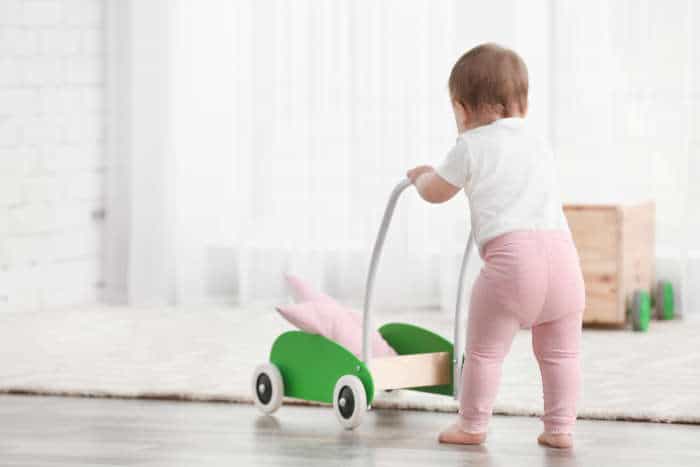
The basic design of push walkers stays the same. There’s a large body (which can/cannot include a battery-operated entertainment center) with wheels, and a handlebar for the baby to hold while she pushes. There is weight to the main body of the walker which usually prevents tipping. Push walkers are designed to encourage your baby to use their body to carry their weight safely. Its’ selling point is that when babies use it, it closely mimics how a baby would walk on his/her own because it allows for a baby to stand tall and balance her feet on the ground.
Push walkers are safer and generally good alternative to the seated walker you might be thinking of. You can see some good examples here.
Seated walkers are different. They have wheels just like push walkers but they aren’t designed similarly by any means. They are usually saucer-shaped and have an opening in the middle for the baby to be seated in. They also have an activity center or trays with activities and/or toys either in front of baby or all around the baby to provide entertainment.
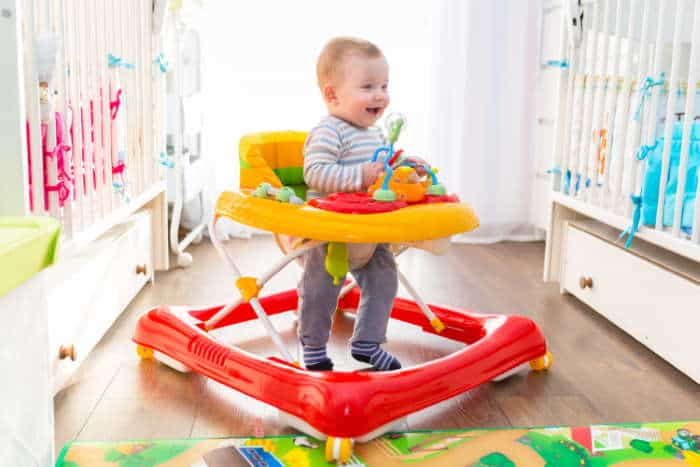
For the sake of this article, we’re going to be taking a deep dive into the realm of seated baby walkers. Its’ pros and cons, its’ safety issues, and its’ impact on child development. Now that isn’t to say you shouldn’t use precautionary measures with other types of walkers. Because you most definitely should. And with any baby gear, for that matter.
Basically, don’t take any chances with your precious cargo.
So are they good or bad for development?
Okay so we all grew up using walkers, right? Well, most of us did anyway. And it would just feel natural to purchase one for our own kiddos. Because we want them to learn how to walk too. Don’t we?
Well, here’s the thing. Seated baby walkers are a safety hazard and have been a source of considerable controversy for years. And get this: even if they were safe, there is no evidence that they help prepare children to walk properly. Cue the parenting gasps.
It’s a tough pill to swallow. Most parents have been trained to believe that baby walkers are useful for their children. That not only do they provide hours of entertainment, but they also teach them how to walk. Not so true folks. Baby walkers have been speculated, advocated against, recalled, and studied. And we’ve broken it down for you.
This study, conducted in 2002, focused on any delay onset of walking in children who used seated walkers. Unfortunately, the findings were not so great.
Children who used baby walkers actually experienced a delay in walking than their counter group – who didn’t use walkers. This delay was between 11 and 26 days in length. Although the significance of this delay was unclear and not pursued, it provides zero support to the argument and claim that walkers have a beneficial impact on aiding babies to walk.
Another study suggests that the reason for the delay of walking in children using walkers is the fact that babies are unable to see their bottom limbs and make the connection that the movement of their legs is what allows them to walk. In this study, children who used walkers not only walked later, but also sat and crawled later than those who didn’t use them. Walker users also scored lower than no-walker users on Bayley scales of mental and motor development.
Now we aren’t saying that baby walkers don’t provide any benefits at all. But we’re here to say that any benefits that present with seated baby walkers are outweighed by the risks.
The take-away? Seated walkers aren’t as good for development as we all probably once thought.
A history of accidents
Walker injuries happen. And unfortunately, seated baby walker related injuries are more common. A study in the Journal Pediatrics estimated 230,676 children less than 15 months of age were treated for infant walker-related injuries in emergency rooms between 1990 and 2014. A quarter of a million babies. We’ll give you a minute to take that in.
Most of those babies sustained head injuries and broken bones. 90% actually. 74% of these babies were injured by falling down the stairs in a walker. Even after standard implementations (and we’ll get to that later), there were 8 pediatric fatalities from 2004-2008.
Historically, as you just read, LOTS of injuries happen due to walkers. The early 90’s saw thousands of injuries and the majority of them were due to stair falls. In the year 1991 alone, there were about 25,000 total injuries related to walkers. A whopping 20,000 of those were from the walkers falling down the stairs.
Over the years, most walker injuries have drastically decreased. If you’d like to see the graphed data for yourself, click here.
What was done about it?
In an effort to reduce all injuries that were caused by baby walkers, safety standards were consequently created and implemented.
In 1997, the safety standard ASTM F977-96 was revised. Originally, this voluntary standard was established in 1986 and addressed walker tip overs and overall structural failures. It wasn’t until this 1996 revision that the falling of baby walkers down the stairs was addressed. The revised standard required walkers to be wider than standard doorway sizes. From 1996 and onwards, this standard was revised in minor ways many times until 2003.
Finally, a mandatory standard was implemented (16 CFR 1216). This included more stringent requirements. The standard created specifications for testing equipment. It also added a parking brake test for those walkers that had parking brakes. The standard further allowed the Consumer Product Safety Commission (CPSC) to stop non-compliant walkers from entering into the US marketplace.
Why is that so important? Well, to put things into perspective, all 10 baby walkers that were recalled from 2001-2010 were imported. Yikes.
The voluntary standard revision and the implementation of a mandatory standard, combined with an increased public awareness about walker injuries and an increase in production of stationary play centers all worked together to help decrease the overall injuries sustained from baby walkers.
Current safety standards
The current safety standard is published in the Code of Federal Regulations in section 16 CFR part 1216. The standard consumer safety specification for infant walkers is ASTM F977-12, which includes the specific performance requirements, general performance requirements, and labeling requirements.
The key provisions include:
- Prevention of falls down stairs – intended to ensure that a walker will not fall down stairs when facing forward, backward, and sideways.
- Tipping resistance – intended to ensure that walkers are stable and do not tip over when on a flat surface; includes tests for forward and rear tip resistance, as well as for the occupant leaning over the side.
- Dynamic and static load testing on seating area – intended to ensure that the child remains fully supported while stationary and while bouncing/jumping.
- Occupant retention – intended to prevent entrapment by setting requirements for leg openings
This above information was taken directly from the CPSC website.
The standard also includes:
- Tests that make sure the components can not be removed
- Feature requirements that prevent entrapment of child and cuts (which can occur from the seat openings, leg openings, edges on the walker that can scrape)
- Required locking mechanisms that ensure walkers don’t collapse while in use
- The requirement of labels
- The requirement of warnings and instructions
These are all in addition to requirements mandated for surface coatings, lead content, testing/certification, registration cards, and tracking labels.
The introduction of these safety standards led to a 91% reduction in overall falls down the stairs.
However, even with a decrease of infant walker-related injuries, falls down the stairs continue to be the number one injury mechanism that comes with these products.
If you’d like additional information on safety requirements for baby walkers, you can contact the US Consumer Product Safety Commission directly.
Safety considerations
Now maybe you’re still thinking about purchasing a baby walker. Or your parents gifted you one before your baby was even born. And you might be sort of, kind of, contemplating letting your baby use it.
Well, there are a few things you should think about before putting a baby walker into use.
Gate your stairs (the top of them)
Here’s the good news: if you have stairs at home, you probably already own a baby gate. Or were thinking of doing it soon. Little babies are notorious for being curious and an ungated stairway is a recipe for disaster.
And yes, even though safety standards have greatly reduced the amount of these kinds of accidents, baby walkers can very well still fall down them. So be safe and add a secure gate to your stairway.
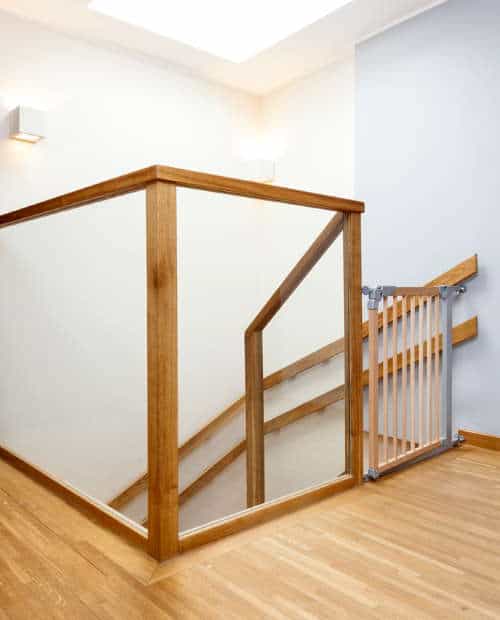
Check their access
Babies in walkers are able to get into places quicker than they normally would be able to without them. These places include through doorways, into cleaning cupboards, and close to the fireplace. Baby walkers used outdoors can very quickly get into swimming pools or onto the roads.
Always use supervision when babies are in walkers and try to block off their access to harmful areas as best as you can.
What’s within reach?
We know. You baby-proofed and baby-proofed, and your kiddos are still able to find some trouble around the house. Been there so, so many times. Even then, try your best to put away harmful and/or large items that might come into their reach while in a walker. Especially if your baby is tall! Clear off heavy items from tables and remove any pans that might be sitting on your stovetop. Tuck away standing fans that could easily fall on your baby if they get a hold of the handle.
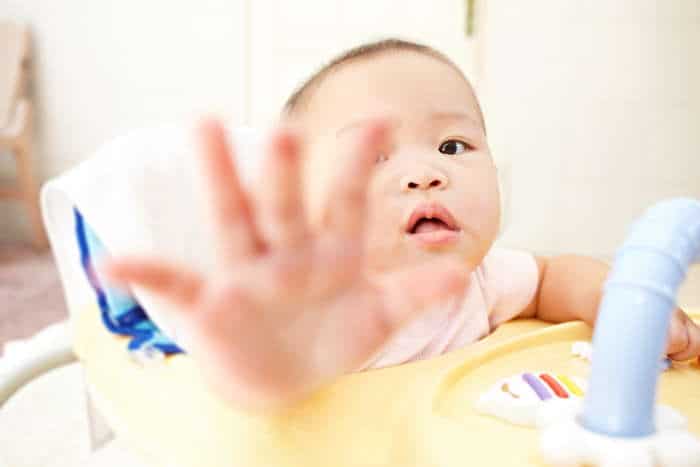
Look for pinch points
Even though they should have a base that stops the upper trays from hitting walls, walkers can still lead to baby fingers and toes being pinched. Ouch!
Look for areas and items in your home that might trap little fingers. Side tables, console tables with drawers and pulls, and doorways. Purchase finger pinch guards and use them wherever applicable.
Check your corners
Babies in walkers can gather speed quite quickly. This means they’re running into things faster and with more force. Even into things with sharp corners. Use corner protectors on coffee tables, bookshelves, desks, and other items that may be at baby’s head height. Running into sharp edges and corners can very easily produce nasty bumps on the head.
Limit their use
We all know the saying: everything in moderation. And it very perfectly applies here. Baby walkers should not be used for hours on end. Limit your child’s usage of baby walkers to 20-30 minutes at a time.
Consider the flooring!
The environment you place your child in while using a baby walker doesn’t impact motor and cognitive changes. It does, however, have a great impact on the occurrence of injuries and accidents.
Make sure the floor upon which the walker will be moving is smooth. That means no loose rugs that can easily bunch up underneath the walker or get caught in the wheels. Also consider if your home switches between carpet and hardwood/tile. This change in flooring can cause the baby walker to go shooting off uncontrollably and can very easily cause an accident. Try to keep the flooring in the designated area the same or add secure layers that would prevent the walker from zooming fast.
Is there a baby walker ban in the US?
Currently, there isn’t an actual ban on walkers in the United States. The American Academy of Pediatrics, however, have called for a ban on the manufacturing and selling of seated infant walkers in the United States.
After a 2018 study was published in the Pediatrics journal, concentrating on infant walker-related injuries in the United States, the AAP and other organizations have issued warnings against baby walkers.
Baby walkers are actually illegal in Canada! The sale of baby walkers there was banned in 2004 and Canada became the very first country in the world to ban baby walker sales, importations, and advertisements. Baby walker owners in Canada can be fined up to $100,000 or sentenced to up to six months of jail.
Dr. Benjamin Hoffman, chair pediatrician of the American Academy of Pediatrics Committee says, “I view infant walkers as inherently dangerous objects that have no benefit whatsoever and should not be sold in the U.S.”
Kids in Danger is a non-profit organization that advocates for the improvement of children’s products and baby gear safety. The organization provides education to parents, training engineers, designers and manufacturers. Kids in Danger is also in support of implementing a baby walker ban.
Even with the decrease of total injuries caused by baby walkers and the improvement of safety standards, injuries still occur.
“There are still 2,000 children a year being treated for injuries, many of them serious injuries, in emergency departments,” says Dr. Gary Smith. He’s the director of the Center for Injury Research and Policy at Ohio’s Nationwide Children’s Hospital. “Therefore, we support the position of the American Academy of Pediatrics that baby walkers should be sold or used. There’s absolutely no reason these products should still be on the market.
Why there should be…
Visual footage is often the best telling of how alarming a situation can be. But let us warn you, the following video is distressing. But it’s also enough to support a ban for seated walkers.
Walker Product Recalls
As we mentioned before, there have been lots of baby walker recalls. Let’s talk about some of the latest ones.
BebeLove Baby Walkers
The last baby walker which was recalled was the BebeLove Baby Walker. In February 2014, this product was recalled because it failed to meet federal safety standards. More specifically, the walker was able to fit through a standard doorway and was not designed to stop at the edge of a stairway. A separate style of this walker also contained leg openings that could allow a child to slip down and entrap their neck. Babies using these walkers could have been seriously injured or killed.
My Way Baby Walkers
In 2008, My Way baby walkers, manufactured in China, were recalled because they violated the standard of being wider than a standard doorway. Like the BebeLove walkers, these walkers were not designed to stop at the edge of a step.
These unfortunate recalls do mean this: that most baby walkers on the market today meet federal safety regulations.
Alternatives to seated baby walkers
Here’s the thing, folks. Seated baby walkers are just not that safe. But that shouldn’t result in any sort of FOMO (that’s fear of missing out for those that might not be so hip to today’s language); because there are plenty of awesome alternatives out there. We’re sure your baby will love any of these substitutes.
Push walkers
We mentioned these earlier. They’re sit-to-stand walkers your baby can push using the designated handlebar. Some are battery-operated to provide extra entertainment for curious babies while others are simply wooden push carts/wagons. We feature a few good ones in this article.
Although push walkers are considerably less dangerous than seated walkers, you should still be cautious while using them. Keep the above safety considerations in mind!
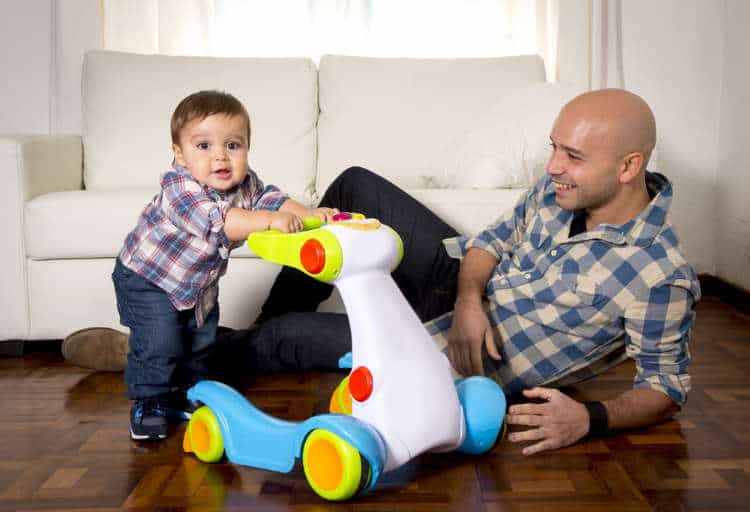
Jumpers
Or jumperoos, as Fisher-Price likes to call them. Baby jumpers are pint-sized playgrounds that provide tons of fun. They’ve got sounds and lights and toys – oh my! Activities on a baby jumper can help develop and improve fine motor skills. They’re also great for exercising. And if you didn’t know, a well-exercised baby is a tired baby. And a tired baby, usually means a sleepy baby. Bless you baby jumpers.
Remember though, don’t put your baby in and forget about her. Jumpers are only great with limited use. Try not to have your child in there for more than 20-30 minutes.
Activity tables
Stationary activity centers or tables were one of the reasons baby walker injuries decreased: more people began purchasing activity centers that were much like baby walkers but without product mobility. Some of the greatest activity tables allow your child to stand, move around and explore the many different toys, activities, sounds, colors, and other bells and whistles that provide healthy and fun stimulation.


